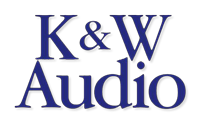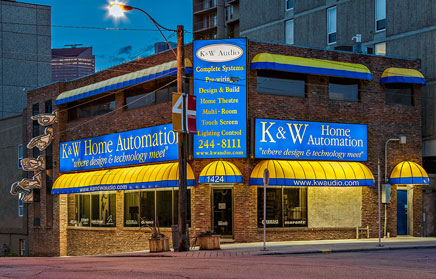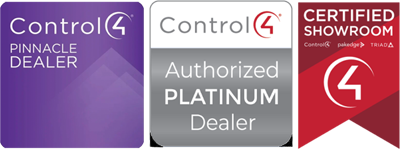TIP #29:
Things are always changing in the electronics field, so how do we keep up? It’s a familiar question around here. The reality is, when you are involved on a daily basis with anything, the changes are quite easy to absorb. One recent change is AC3, a new encode/decode surround sound system for movies (the short, simple explanation). Remember when Dolby was all that was available on a cassette deck? Today, we have many of ways to remove “hiss” from a recorded tape including Dolby C, S, HX Pro plus ANRS and DBX. All have come along over the years with essentially the same goal – to make better recordings.
Home Theatre is in its infancy when compared with the cassette deck, but the pursuit of higher quality sound (and picture) is probably even more intense now than at any time in the cassette’s lifetime. In the late 70’s the VCR and the Laser disc player came on the scene. Originally they were conceived to fulfill two different proposes, the VCR as time shifter of TV programs , the LD player as a movie box. The question often posed by someone out shopping for their first video machine is, “Why should I buy an LD player that only plays movies, when I can buy a VCR that will both record and playback?”
With consumers having this mindset, movies became available for VCR’s in competing formats (another story), while the Laser disc became known as the enthusiast’s quality movie box. These enthusiasts have never rivaled the numbers electing to use the video tape format.
Thus, with the VCR’s success assured and its role expanded, it became apparent that it was lacking in sound quality, when compared to the local movie theatre. Enter stereo VCR’s capable of a separate right and left channel, to be followed by hi-fi units offering stereo playback with dynamic range rivaling the emerging CD player. The difference between listening to a movie through the cheesy TV loudspeaker and home stereo speakers, was mind boggling. All that remained to fully reproduce the sound of a movie theatre was speakers all around the listener – just like a theatre.
Enter Dolby Pro Logic. This was a new way of encoding 4 channels (right, left, center and surround) on a two channel audio track. This system feeds the same audio information to both rear speakers. This works great, and has become the minimum standard required for an entertainment system to be dubbed a “Home Theatre” system. Yamaha enhanced the format with their technical wizardry, creating the ambiance of the movie theatre, even allowing different information to be processed for each of the rear effect loud speakers. This refinement is known as 35mm and 70mm, and is our current reference standard. THX came into being at the same time, but is not a factor in this discussion as it re-equalizes the sound that is there already. It is not a different way to encode or decode.
So what’s wrong with our current standard? Well for starters, the rear channels are encoded on the tape in mono, the movie maker’s 6 channel sound is diluted in the dubdown to only two channels, plus the center and rear effects are dynamically limited, due to the amount of information that has to be crammed onto a tape. As Yamaha has demonstrated, it is possible to create a closer to stereo effect through digital fiddling.
However, AC3 deals with these shortcomings by encoding 6 separate channels of audio on the playback medium (the extra channel is sub bass). The medium used must be an optical disc, and as such limits itself to the laser disc player for now, and the DVD player in the future. The result is full range stereo sound from the center and rear speakers, and even more bass to boot! Movie makers are encoding their sound tracks with this new technology which, when used to full advantage, is one big step forward in sound quality and impact.
So, the next step is here, but as with most advances in our field it is simply built on what came before. It does not make any previous technology obsolete, it is just a logical progression. Easy, eh?


